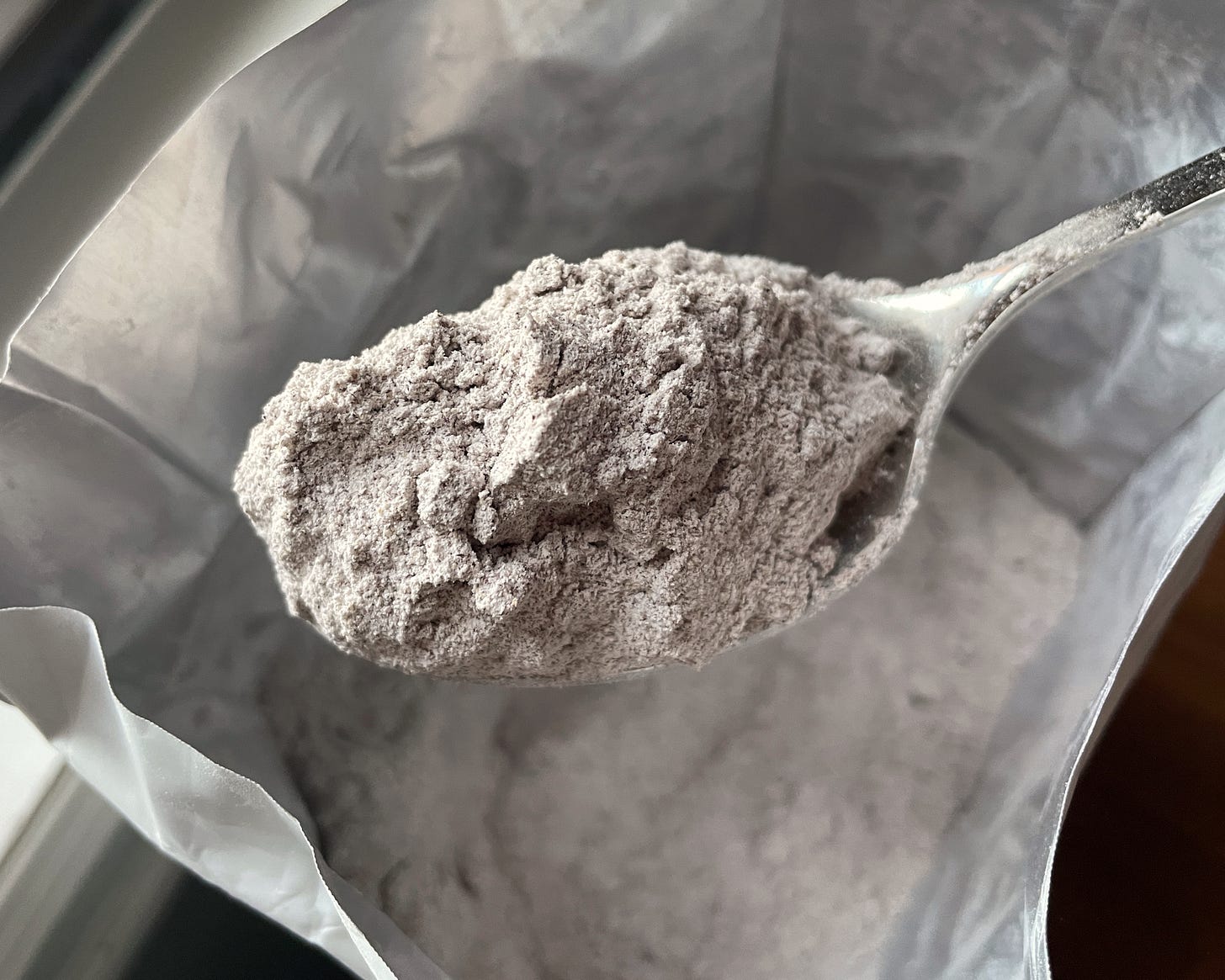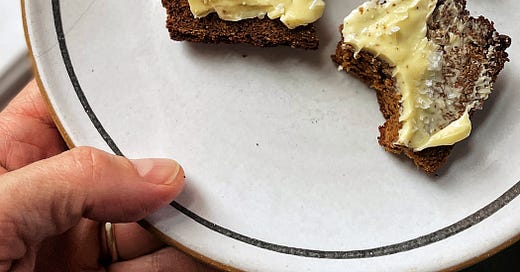Barley-ified Stout Bread
A satisfying and mostly one-bowl loaf for soups and snacking, coincidentally just in time for St. Patrick's Day
I first tried Irish brown bread almost 20 years ago, when I went to Europe and traveled through Ireland. It was one of my favorite foods of that trip — which is to say something, because the entire experience was formative in my food education.
I found it to be a dense but soft wheat bread that’s malty-sweet and tender, tinged with molasses. Ideally there was the option to frost it (see photo above; teeth marks) with good, cool butter.
I stupidly didn’t pick up a recipe while I was there, and back home after that trip, I struggled to find one. But a recent dabble in beer breads prompted me to wonder if this brown bread hadn’t included beer, too, a dark stout like Guinness. As you probably guessed (or may have already known), that was the missing piece.
Coincidentally apropos of St. Patrick’s Day coming up, this is a quick bread similar to soda bread, leavened not with yeast but baking soda and beer. It’s also typically made entirely with whole-wheat flour, and is very handy for impromptu occasions, coming together in pretty much just one bowl.
And not to brag but in my fine-tuning of this recipe, I may have even improved on what I remember. The crust is thick, rich, and a bit crunchy. The crumb is fine but tender. The flavor is malty, just exactly sweet enough. It goes without saying that the butter is always close by. I’ve actually been coming up with excuses to retest this recipe over and over — it’s just so good I always want a slice.
Recipe Video
Barley Flour
In my cupboard there’s been a giant, lingering bag of purple barley flour, from my friends at Hayden Flour Mills. Barley is of course an ancient grain, tracing back thousands of years (this particular one to Tibet) and while I’m not sure it’s got a significantly greater health advantage than other whole-grain flours, it is rich in antioxidants, nutrients, and a good source of fiber (both soluble and insoluble). It’s silky soft and very fragrant, and in baking, it seems to have a lot of potential.

I just haven’t been sure what all to do with it. It works great in pancakes; you don’t even need to cut it with a higher-gluten flour. But otherwise, incorporating much more than 15 to 20 percent barley flour for all-purpose has contributed a dense and gummy consistency.
However, because roasted barley is one of the defining features of a stout beer, I was determined to work it into this recipe. And ultimately I found that it could handle a lot. One-third barley flour (with the other two-thirds whole-wheat flour) not only yields a loaf that’s as hearty-tender as I desire, but its nutty, malty flavor shines through, too.
Do you bake with barley flour? Do you have any tips?
High-Low Baking, and an Optional Butter Baste
To help this bread get an extra lift, you’ll start out baking it in a hot oven, and then lower the temperature for the remaining time. This is a good technique for a lot of baking, where you want the power of a high heat to get leaveners quickly activated, but then don’t want to burn anything either. I love the steep, craggy crust that emerges out of this batter, full of crunchy bits once the bread cools.
And speaking of that crust, one idea I got from this Erin Jeanne McDowell beer bread recipe is to brush it with a bit of extra butter as it bakes. Just one basting session halfway through the baking time is all that’s needed. You certainly don’t have to do this, but I think it’s worthwhile.
Stout Bread with Barley Flour
Keep reading with a 7-day free trial
Subscribe to Family Friend by Lukas Volger to keep reading this post and get 7 days of free access to the full post archives.




